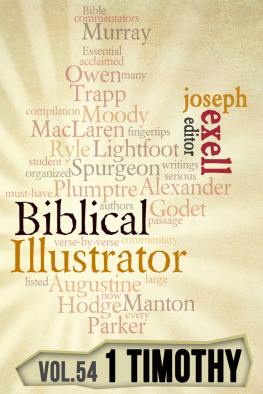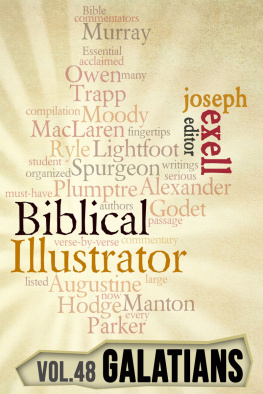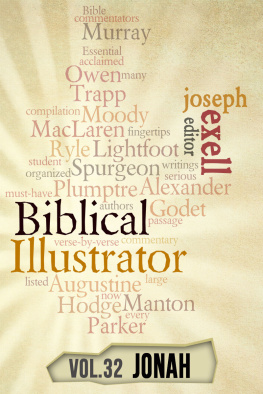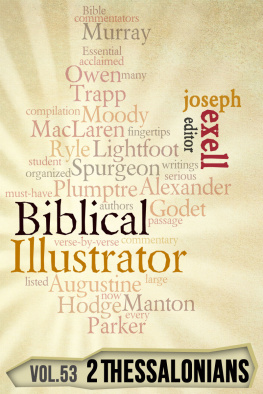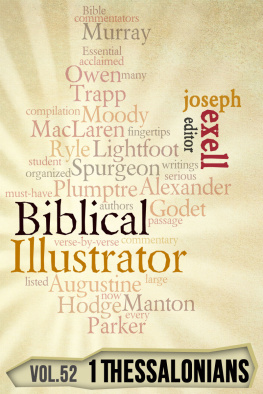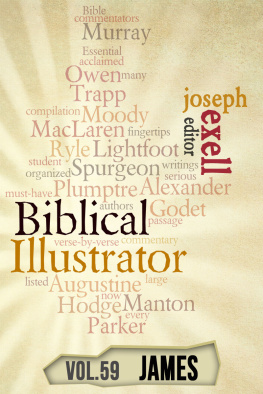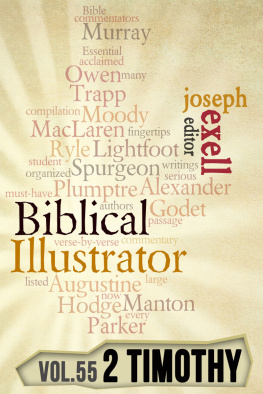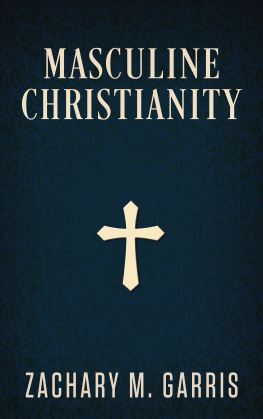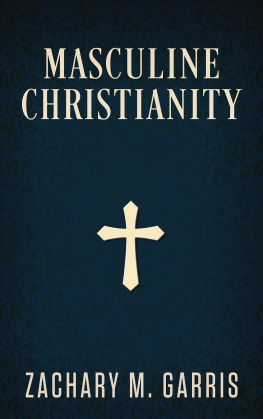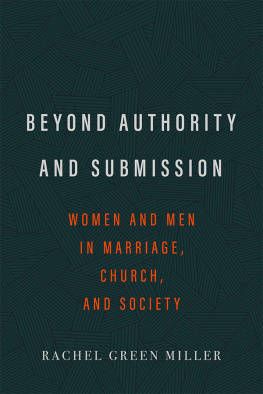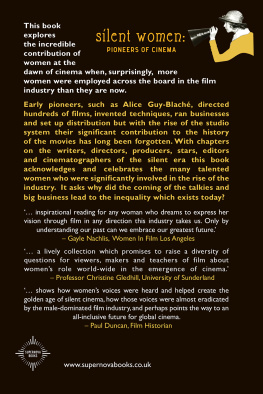1 Timothy
Series Foreword
What if Charles Spurgeon helped you prepare next Sundays sermon?
Or what if you could talk over your preaching with Joseph Parker, Richard Baxter, Henry Ward Beecher and H. P. Liddon. Do you think it would make a difference to get the input of some of the greatest preachers who ever lived?
Thats precisely what Joseph Exell had in mind when he put together the massive series of volumes called The Biblical Illustrator. In what can only be called a Herculean feat, he spent years gathering preaching notes and sermon outlines from the very best preachers of his day (in the late 1800s and early 1900s), and he did it covering every book of the Bible.
Following the tradition of the time, he gave the series a flowery subtitle, describing it as anecdotes, similes, emblems, illustrations, expository, scientific, geographic, historical and homiletic, gathered from a wide range of home and foreign literature, on the verses of the Bible. He means that in these volumes you have everything you need in order to preach a sermon, teach a Bible class, or study a text on your own.
And it is amazingly comprehensive. Exell approached his task by taking every verse in the Bible and seeking to discover how it has been preached in the past. Though there is plenty of exegetical material here, this is not primarily a commentary.
This series is for preachers, teachers and Bible students.
Besides obviously being an omnivorous reader, he had a gift for amazing diligence. The Biblical Illustrator was published in 66 volumes. To give you a sense of how comprehensive it is, volume 49 contains 588 pages on Galatians. And the type in the original version was very small, with narrow margins so you almost had to have a magnifying glass to read it. But Joseph Exell had something in mind other than publishing a stylish book. He wanted to give preachers a book so complete that you could give it to someone and say, Go preach Galatians, and they could do it.
No one could ever use all the sermon outlines in the Biblical Illustrator. But thats not the point. We all agree that the best preacher starts with your study of the biblical text. But at some point you need to know what others have seen in the same text you are studying.
What did Spurgeon see?
What did Parker see?
What did Alexander MacLaren see?
Maybe you will see the same thing they did. Probably you will see something similar. But its entirely possible that Spurgeon (who has a flair for memorable phrasing) captured the thought of the text in a way that never occurred to you.
And there are times when the preacher needs some help in priming the pump. We all know what its like to be stuck in some passage of the Bible. You know what it says, you have studied the words, you have read a few commentaries, but somehow the message isnt jelling in your mind. Thats where the Biblical Illustrator is likely to be most helpful to you. If you are preaching on, say, Hebrews 10:19-25, you can find real help in the Biblical Illustrator. There is an expanded sermon outline by J. Colwell that almost anyone could expand into a profitable message. There is a lengthy and intricate outline by the Puritan pastor Thomas Boston and a moving exposition of Christ our high priest by Adolph Saphir.
Thats just one tiny example of one text. And Joseph Exell does that for every text in the Bible.
Its a phenomenal piece of work, and one that stands up very well more than a century later. I know of no comparable collection that has been done since then. I doubt if anyone would have the time or energy to attempt such a massive project today.
I bought my first copy of the Biblical Illustrator almost 20 years. Back then it came in six or seven massive volumes, printed on oversized pages with type so tiny I could hardly read it. About 10 years ago I purchased a CD with the Biblical Illustrator in PDF format. That was a huge improvement. But with the advent of ebook technology, we at last have the Biblical Illustrator in its most useful format. Because it is indexed to each section of the book, you can quickly find the passage you are looking for. And you can enlarge the text as much as you like.
As you can tell, Im big fan of the Biblical Illustrator because it preserves the wisdom of an earlier age. I would fully agree that you must start with your own study of the text, and we definitely need the fruit of recent biblical commentaries. But alongside your own study and the reading of current commentaries, there is a large place for reading the Biblical Illustrator.
Joseph Exell wanted to help preachers, teachers, and everyday Bible students. He succeeded admirably in his task. The fruit of his labors is now available for the first time in ebook format, making it more usable today than when it was first published.
For those who want to study the Bible and then teach it to others, the Biblical Illustrator will help you on every single text in the Bible. For over a century preachers and teachers have turned to it and found what they needed. I gladly say that it has often helped me, and I am glad to commend this series to you.
Dr. Ray Pritchard
President, Keep Believing Ministries
April 2012
Dallas, TX
Introduction
INTRODUCTION TO THE PASTORAL EPISTLES .
The genuineness of these Epistles. As we read the Epistle to the Philippians, we feel that the apostle in his roman prison was looking for speedy martyrdom. In many respects he regarded his work as finished. At the same time he felt that his "abiding in the flesh" was a help to the Churches which he had founded, and would fain visit once again (Philippians 1:24). In this aspect there seemed still a work for him to do. We are not told in the Acts which of the two possibilities was realized. In its closing verses it refers to the two years of Paul's captivity in Rome, but does not tell us to what issue they led. We are inclined to accept as the more probable, the idea that the apostle was set free, and was thus enabled to renew his labours for the good of the church either in the East or West. We know that his plan, when in the year 59 he left Corinth to repair to Jerusalem and thence to Rome, was not to take up his abode in Rome, but simply to pass through it on his way into spain, that he might fulfil the ministry which he had received of the Lord, to carry to the very end of the earth the testimony of the gospel of his grace. Was it given him to fulfil this purpose? Thirty years after the death of St. Paul, Clement, bishop of Rome, writing to the Corinthians, says that "Paul, after preaching the gospel from the rising to the setting sun, and teaching righteousness throughout the whole world, arrived at the extremity of the West; and after suffering martyrdom in the presence of the rulers, he was set free from this earth and reached the holy place prepared for him." Now it does not seem to me possible to suppose, as so many critics do, that by this expression, "the extremity of the West," Rome is meant: especially after the words going before, "from the rising to the setting sun," and "throughout the whole world." Rome, so far from being the "extremity" of the world, was rather regarded as its centre. We are confirmed in the idea that this is not Clement's true meaning by another passage also written at Rome, and bearing testimony to the tradition then current in that Church. It occurs in the Fragment of Muratori, where the writer refers to the "passion of Peter and the departure of Paul from Rome for Spain." We are not so much concerned at present with the question whether Paul went into Spain, as whether, in the event of his liberation, he again visited the Churches of Macedonia, the Church at Philippi, and the Churches in Asia, according to the hope expressed by him in the Epistle to Philemon. This question is inseparable from that of the authenticity of the Pastoral Epistles. It is impossible to find, during Paul's active ministry in Greece and in Asia Minor, or during the two years of his first captivity in Rome, circumstances corresponding to the biographical details contained in them. Either the Pastoral Epistles are genuine, and in that case, they date from the time between the liberation of the apostle and his martyrdom, and are the latest monument we have of his apostolic work; or they are spurious productions. On the latter supposition, criticism must find some explanation of the purpose of such a forgery. The majority of the critics at the present day incline to the view last given, though the evidence of tradition is as strong in favour of the authenticity of the Pastoral as of any of the other Epistles. There is a correspondence scarcely to be mistaken between certain expressions in the Epistle to Titus and the First Epistle to Timothy, and the Epistle of Clement of Rome; while it is impossible to deny the allusions to the Pastoral Epistles in the letters of Ignatius and Polycarp. The ancient Syriac Bible, as well as the Latin, in the second half of the second century, contained the Pastoral Epistles with all the others, and the Fragment of Muratori expressly records their admission into the canon, notwithstanding their originally private character. The Fathers at the close of the second century quote them as unanimously accepted. The two Gnostics, Basilides and Marcion, seem indeed to have rejected them, but this is not to be wondered at. If then in modern times the majority of critics coincide in denying the authenticity of all three, or of one or other of them, it must be on account of their contents. One thing is clear: these Epistles do differ from all the rest in certain very marked particulars. The apostle seems in them to be more occupied than was his wont with the future of the Church, and attaches greater importance to the various ecclesiastical offices on which that future might largely depend. He has before him dangerous teaching, which is spreading among the Churches, and which, if it became prevalent, would gravely undermine true piety. This teaching is of an altogether different character from the Pharisaic, Judaizing doctrine, against which he had protested in his earlier Epistles. Lastly, there is an evident want of cohesion in the ideas expressed and in the subjects treated, and a frequent repetition of certain forms of speech, which do not occur in the earlier Epistles. What conclusion must we draw from these various indications? Is it true that there never was a period in the life of the apostle when new considerations, of which there is no trace in his earlier Epistles, may have come to occupy his mind? Is it true that there is no reason to suppose that towards the close of his life, his teaching may have taken a new direction, and may have found expression in new modes of speech appropriate to the changed conditions? Is it true that the unsound teaching against which he charges his colleagues to contend earnestly, can be no other than the Gnostic heresies of the second century, which would necessarily imply that these Epistles are the work of some forger assuming the name of St. Paul? Is it true, lastly, that the ecclesiastical organization, to which the writer distinctly refers, belongs to a time long subsequent to the life of St. Paul?

